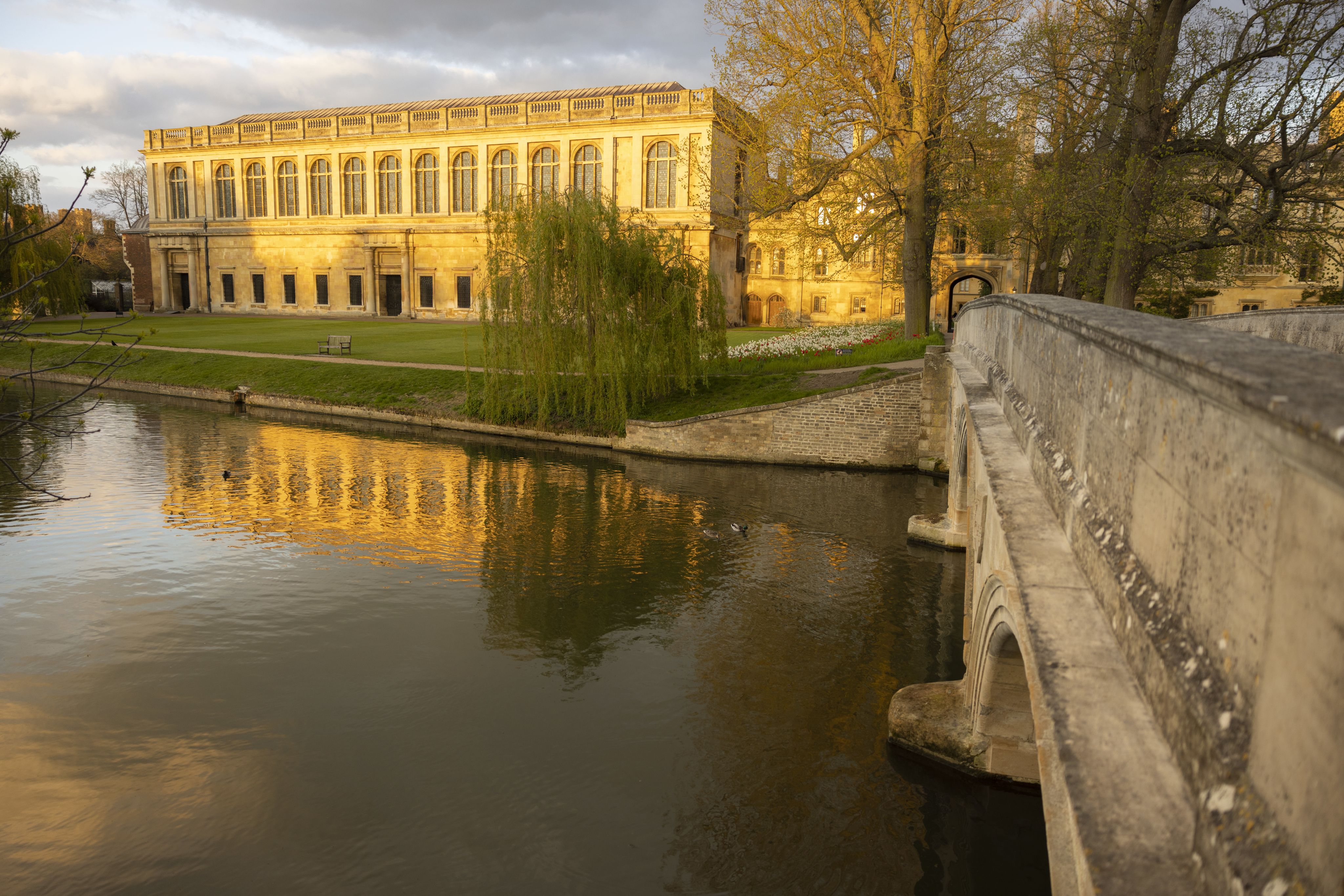Alumni profile
James Harpur (1976, Classics and English Literature)

My first home at Trinity was K5 Whewell’s Court
(‘Blackstained as if by bathroom mould / The Gothic annex made of rain / Rises high through clouds across the road / In central Transylvania …’), where I discovered I was on Wittgenstein’s old staircase. Dazed and confused by Cambridge grandeur and personal self-doubt, I changed from Classics to the sunny uplands of English almost straightaway – a world of Redpath and Ricks, Prynne and Poole – then wondered if I’d made a mistake. I also didn’t know whom to hang out with, or what to wear. I ditched my post-hippie claret corduroy jacket and pink loons for tweedy Pitt Club garb, for at least six weeks. That didn’t work. I wore this and that, even Footlights-style dungarees.
I bumbled along in English Literature, finding my first ray of inspiration in Chaucer’s Troilus and Criseyde – but only through a passage of Boethius he had translated about providence, fate and fortune. This inspired me to write The New Oracle, a short play about computer dating (very new in those days!). Trinity’s Dryden Society accepted it for production, and, lo, my writing career began. Yet the world of drama didn’t suit my temperament. Too many accidents lurked (missed lighting cues, forgotten lines), and I turned to poetry, prompted by the Powell Prize for Poetry, a College competition founded by Enoch himself. My first-ever poem (about St Patrick getting rid of the snakes in Ireland) came first equal, and that was enough to encourage me, after I left Trinity, to write poems on the island of Crete.
The front cover of The Magic Theatre features the painting The Badminton Game by David Inshaw, Trinity Fellow Commoner in the Creative Arts 1975-1977.
The front cover of The Magic Theatre features the painting The Badminton Game by David Inshaw, Trinity Fellow Commoner in the Creative Arts 1975-1977.
The Magic Theatre describes my three-year journey through Trinity – at a time when the country was beset by industrial unrest and the Troubles, and morphing from Prog Rock to Punk and Disco. It tells of scary tutorials (Mr Salingar, and Dr Casey in Caius), a broken love affair, crashing May Balls, Bacchic parties, theatrical pratfalls, discovering poetry, and most of all, friendships. My era was that of The Whim restaurant, the Arts Cinema in Market Passage (I saw Death in Venice nine times); Broadsheet (for which I drew cover illustrations and cartoons) and Stop Press; Belinda’s and its cherry cheesecake; the Sidgwick Site to hear Ricks on Bob Dylan and Jeremy Prynne on ‘Jack and Jill’; playing ‘Pong’ in the Baron of Beef; seeing the Footlights parade the likes of Jimmy Mulville and Rory McGrath, and Stephen Fry and Emma Thompson tread the boards of the ADC.
One of my Broadsheet covers.
One of my Broadsheet covers.
In retrospect I feel as if I had wandered into a play with a backdrop of palaces or atmospheric local settings (Kettle’s Yard, the Eagle), not knowing what my role was and who the director or playwright was. Perhaps that explains my obsession with acting on stage (from the ADC to the Shirley Society), for which I had no talent at all? I hope the book will stir memories of what were, in my case at least, three chequered, topsy-turvy, bamboozling and, most of all, formative magical years.
Tryst
At Trinity Bridge, 9 October 1977
The clocks are striking eight around the town.
I stare along the bridge to New Court arch,
Willing her silhouette to get here soon ...
I mutter my lines – like Jacques’ lover
‘Sighing like furnace, with a woeful ballad
Made to his mistress’ eyebrows’. A shiver
Creeps in my scarf and down my jumper
Each minute till eight-thirty, forty-five, and nine.
But I have visualised our brief encounter
So intensely – that when I cross the bridge
To go back to my digs, resigned,
I pass our doppelgängers as they watch
The river, and quiver at my fleeting ghost
To whom they owe their moment of existence.

Thank you to James for allowing us to publish his beautiful poem, Tryst, in The Fountain.
The Magic Theatre is published by Two Rivers Press.
Discover more about James on his website.
This article is included in the latest edition of The Fountain magazine, issue 34 Summer 2025.



